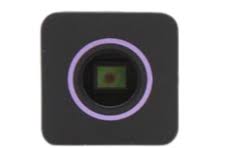Bio-inspired Vision
The first approach in bio-inspired vision was called "silicon retina" and was invented by Mahowald and Mead between 1986 and 1992 [1]. In the following decades, there were more and more different approaches to silicon retinas. Today, we are talking about the so-called Dynamic Vision Sensor (DVS), which is based on a frame-based silicon retina design that was first introduced in the mid-2010s.
There are several advantages of a DVS camera compared to a conventional frame-based camera as it is used everywhere today (e.g. in cell phones, for recording film and TV shows etc.).
A DVS camera can show a high dynamic range (about 140 dB). Each pixel works independently, which enables a very high temporal resolution and a low latency, while the camera is still very energy efficient. Further, the independent operation creates an asynchronous data stream which has advantages and disadvantages for the processing. The main disadvantage of this camera, and the reason why it is not widely used in everyday life, is that a DVS does not have the ability to perceive colour, as it only returns information about a change in the light brightness. In addition, the purchase cost is very high
![]()
In a single DVS-pixel sensor, a positive (increasing) or negative (decreasing) spike is returned. If there is no change, no spike is generated. In the eclectic circuit of the sensor, a kind of membrane potential of the human neuron is modelled by a capacitor. This is used to store the brightness intensity of the last generated spike. There are several parameters that can be used to influence spike generation, i.e. the sensitivity to the amount of brightness change.
Active Projects
Our department has a DVXplorer Mini from Inivation with a resolution of 640x480 px. The new technology allows us to test all kinds of new methods and techniques. We are also trying to find new approaches to handle this large amount of incoming asynchronous data.
The camera is also used for methods of autonomous flight by our drone team. Since it weighs less than 100g, it is very suitable for drone applications.
[1] MEAD, Carver A.; MAHOWALD, Misha A. A silicon model of early visual processing. Neural networks, 1988, 1. Jg., Nr. 1, S. 91-97.
[2] https://www.mdpi.com/1424-8220/22/3/1201
